Updated 07:49 UTC March 5th, 2012 :
Today we had a long duration M2.0 Solar flare that peaked at 10:45 UTC. The source was new large active sunspot region 1429, located at the north east limb. This LDE flare lasted for around 7 hrs. Peaking at 10:45 UTC and finaly dropping to the C1 flare level at around 17:46 UTC.
This event was also associated with a 46min long Radio burst inbounded (Tenflare).
There was a CME produced with this event. Because this CME was ejected on the Eastern limb, it is likely that most of the CME is directed away from earth. However, there was a partial Earth directed portion of this wide CME.
There was also a CME was caused by a filament in the northern region that became unstable on and was ejected from the solar surface.
CME Update March 5, 2012:
According to analysts at the Goddard Space Weather Lab, the CME from todays event could deliver a glancing blow to Earth's magnetic field on March 6th at 04:30 UT
Event Issue Date: 2012-03-04 15:06:24.0 GMT
CME Arrival Time: 2012-03-06 04:29:07.0 GMT
Arival Time Confidence Level: ± 6 hours
Disturbance Duration: 13 hours
Disturbance Duration Confidence Level: ± 8 hours
Magnetopause Standoff Distance: 5.6 Re
Tue, 06 Mar 2012 04:29:07 GMT
Spaceweather.com reports on March 5th 2012
(main report is on the X1.1 solar flare that occured on Match 5th)
When the CME from today's X-flare arrives, a geomagnetic storm might already be in progress. An earlier CME is en route and nearing our planet. According to analysts at the Goddard Space Weather Lab, the cloud, which was produced by an M2-class eruption from sunspot AR1429 on March 4th, could deliver a glancing blow to Earth's magnetic field on March 6th at 04:30 UT (+/- 7 hr).
http://spaceweather.com/archive.php?view=1&day=05&month=03&year=2012
More updates to come on todays M2.0 solar flare + CME
Issued from the NOAA Space Weather PRediction Center:
IA. Analysis of Solar Active Regions and Activity from 03/2100Z
to 04/2100Z: Solar activity was moderate. A long duration M2/1N
flare was observed at 04/1052Z from Region 1429 (N18E55).
Associated with the event was a 750 sfu Tenflare, Type IV Radio
Sweep, and a CME first visible in STEREO B COR 2 Imagery at 04/1210Z
(estimated speed of 840 km/s). This region is classified as a Dkc
spot group with a Beta-Gamma-Delta magnetic configuration. Further
analysis of the CME will be necessary as imagery becomes available,
however there appears to be a partial Earth-directed component. A
glancing blow is possible from this event.
http://www.sci.fi/~fmbb/astro/glossar1.htm
From Spaceweather.com
BIG SUNSPOT: A sunspot almost four times as wide as Earth itself is rotating onto the solar disk.
Earth-effects could become stronger as the sunspot turns toward our planet in the days ahead. NOAA forecasters estimate a 55% chance of additional M-class flares and a 5% chance of an X-flare during the next 24 hours
http://spaceweather.com/archive.php?view=1&day=04&month=03&year=2012
Keep checking back in for updated information :)
Today we had a long duration M2.0 Solar flare that peaked at 10:45 UTC. The source was new large active sunspot region 1429, located at the north east limb. This LDE flare lasted for around 7 hrs. Peaking at 10:45 UTC and finaly dropping to the C1 flare level at around 17:46 UTC.
This event was also associated with a 46min long Radio burst inbounded (Tenflare).
There was a CME produced with this event. Because this CME was ejected on the Eastern limb, it is likely that most of the CME is directed away from earth. However, there was a partial Earth directed portion of this wide CME.
There was also a CME was caused by a filament in the northern region that became unstable on and was ejected from the solar surface.
CME Update March 5, 2012:
According to analysts at the Goddard Space Weather Lab, the CME from todays event could deliver a glancing blow to Earth's magnetic field on March 6th at 04:30 UT
Event Issue Date: 2012-03-04 15:06:24.0 GMT
CME Arrival Time: 2012-03-06 04:29:07.0 GMT
Arival Time Confidence Level: ± 6 hours
Disturbance Duration: 13 hours
Disturbance Duration Confidence Level: ± 8 hours
Magnetopause Standoff Distance: 5.6 Re
Tue, 06 Mar 2012 04:29:07 GMT
Spaceweather.com reports on March 5th 2012
(main report is on the X1.1 solar flare that occured on Match 5th)
When the CME from today's X-flare arrives, a geomagnetic storm might already be in progress. An earlier CME is en route and nearing our planet. According to analysts at the Goddard Space Weather Lab, the cloud, which was produced by an M2-class eruption from sunspot AR1429 on March 4th, could deliver a glancing blow to Earth's magnetic field on March 6th at 04:30 UT (+/- 7 hr).
http://spaceweather.com/archive.php?view=1&day=05&month=03&year=2012
More updates to come on todays M2.0 solar flare + CME
Issued from the NOAA Space Weather PRediction Center:
IA. Analysis of Solar Active Regions and Activity from 03/2100Z
to 04/2100Z: Solar activity was moderate. A long duration M2/1N
flare was observed at 04/1052Z from Region 1429 (N18E55).
Associated with the event was a 750 sfu Tenflare, Type IV Radio
Sweep, and a CME first visible in STEREO B COR 2 Imagery at 04/1210Z
(estimated speed of 840 km/s). This region is classified as a Dkc
spot group with a Beta-Gamma-Delta magnetic configuration. Further
analysis of the CME will be necessary as imagery becomes available,
however there appears to be a partial Earth-directed component. A
glancing blow is possible from this event.
What is a Tenflare?
Tenflare: A tenflare is associated with optical and x-ray flares. Solar flares emit radiation over a very wide range of frequencies. One of the more significant frequencies observed is the 10.7 cm wavelength band (2695 MHz). When a solar flare erupts, "noise" from the flare is received over this very wide range of frequencies.
When the noise received on the 10.7 cm wavelength band surpasses 100% of the background noise level during a solar flare, a Tenflare is said to be in progress. The more intense solar flares are associated with tenflares. Almost all major flares are associated with tenflareshttp://www.sci.fi/~fmbb/astro/glossar1.htm
From Spaceweather.com
BIG SUNSPOT: A sunspot almost four times as wide as Earth itself is rotating onto the solar disk.
Earth-effects could become stronger as the sunspot turns toward our planet in the days ahead. NOAA forecasters estimate a 55% chance of additional M-class flares and a 5% chance of an X-flare during the next 24 hours
http://spaceweather.com/archive.php?view=1&day=04&month=03&year=2012
Keep checking back in for updated information :)
Issue Time: 2012 Mar 04 1230 UTC
SUMMARY: 10cm Radio Burst
Begin Time: 2012 Mar 04 1126 UTC
Maximum Time: 2012 Mar 04 1135 UTC
End Time: 2012 Mar 04 1212 UTC
Duration: 46 minutes
Peak Flux: 750 sfu
Description: A 10cm radio burst indicates that the electromagnetic burst associated with a solar flare at the 10cm wavelength was double or greater than the initial 10cm radio background. This can be indicative of significant radio noise in association with a solar flare. This noise is generally short-lived but can cause interference for sensitive receivers including radar, GPS, and satellite communications.
Issue Time: 2012 Mar 04 1302 UTCBegin Time: 2012 Mar 04 1126 UTC
Maximum Time: 2012 Mar 04 1135 UTC
End Time: 2012 Mar 04 1212 UTC
Duration: 46 minutes
Peak Flux: 750 sfu
Description: A 10cm radio burst indicates that the electromagnetic burst associated with a solar flare at the 10cm wavelength was double or greater than the initial 10cm radio background. This can be indicative of significant radio noise in association with a solar flare. This noise is generally short-lived but can cause interference for sensitive receivers including radar, GPS, and satellite communications.
ALERT: Type IV Radio Emission
Begin Time: 2012 Mar 04 1040 UTC
Description: Type IV emissions occur in association with major eruptions on the sun and are typically associated with strong coronal mass ejections and solar radiation storms.
Issue Time: 2012 Mar 04 1601 UTC
CONTINUED ALERT: Electron 2MeV Integral Flux exceeded 1000pfu
Continuation of Serial Number: 1864
Begin Time: 2012 Mar 02 1425 UTC
Yesterday Maximum 2MeV Flux: 2070 pfu
Potential Impacts: Satellite systems may experience significant charging resulting in increased risk to satellite systems.
We noticed a bright CME on Stereo Images.
Because of the location of the source region on the solar disk, the CME's are probably not ejected straight to Earth. However a portion of it could effect us on around March 7th.
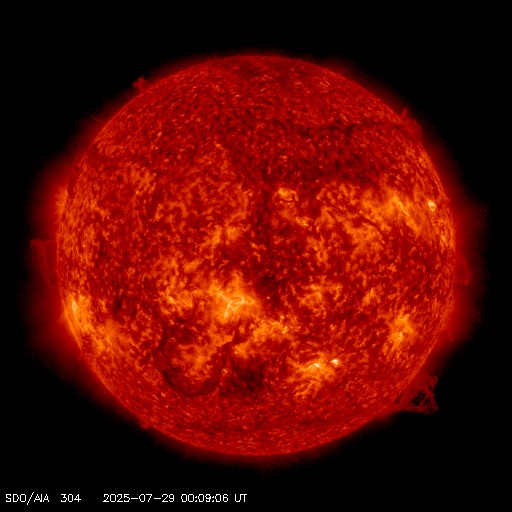
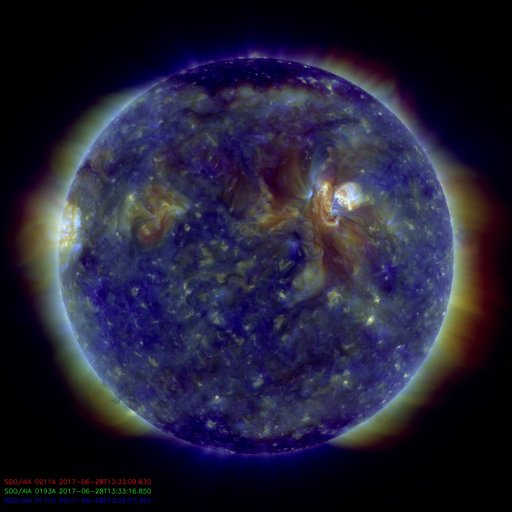
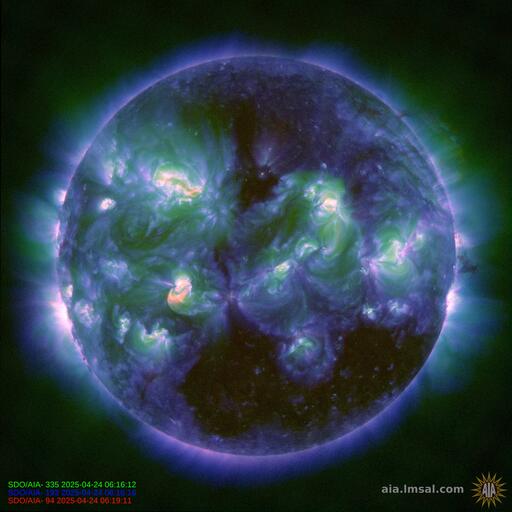
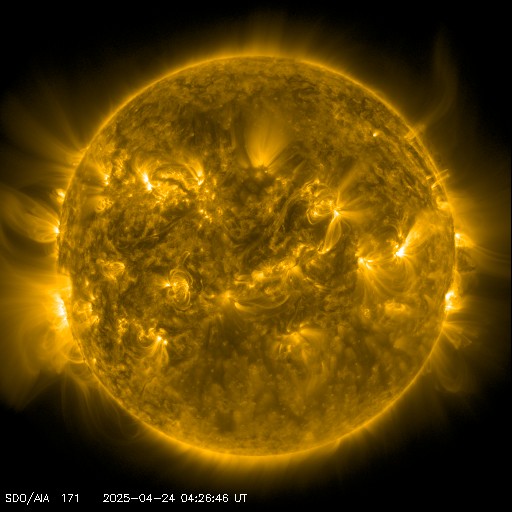
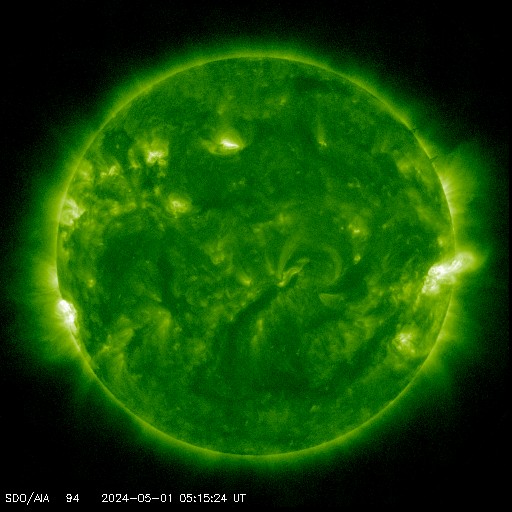
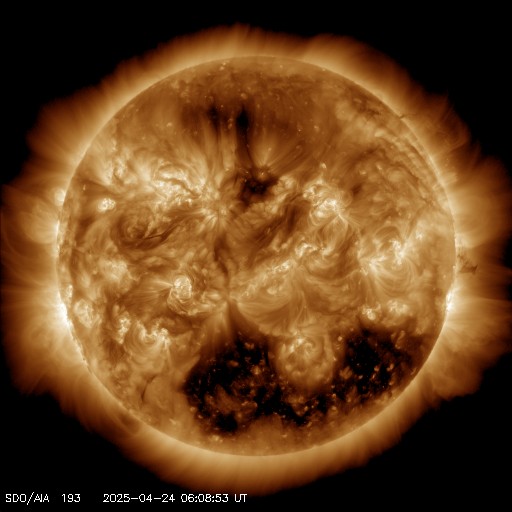





0 REPLIES:
Post a Comment
Thank you for choosing "My Solar Alerts" for your Solar event news.
Check back soon for more updates! :)